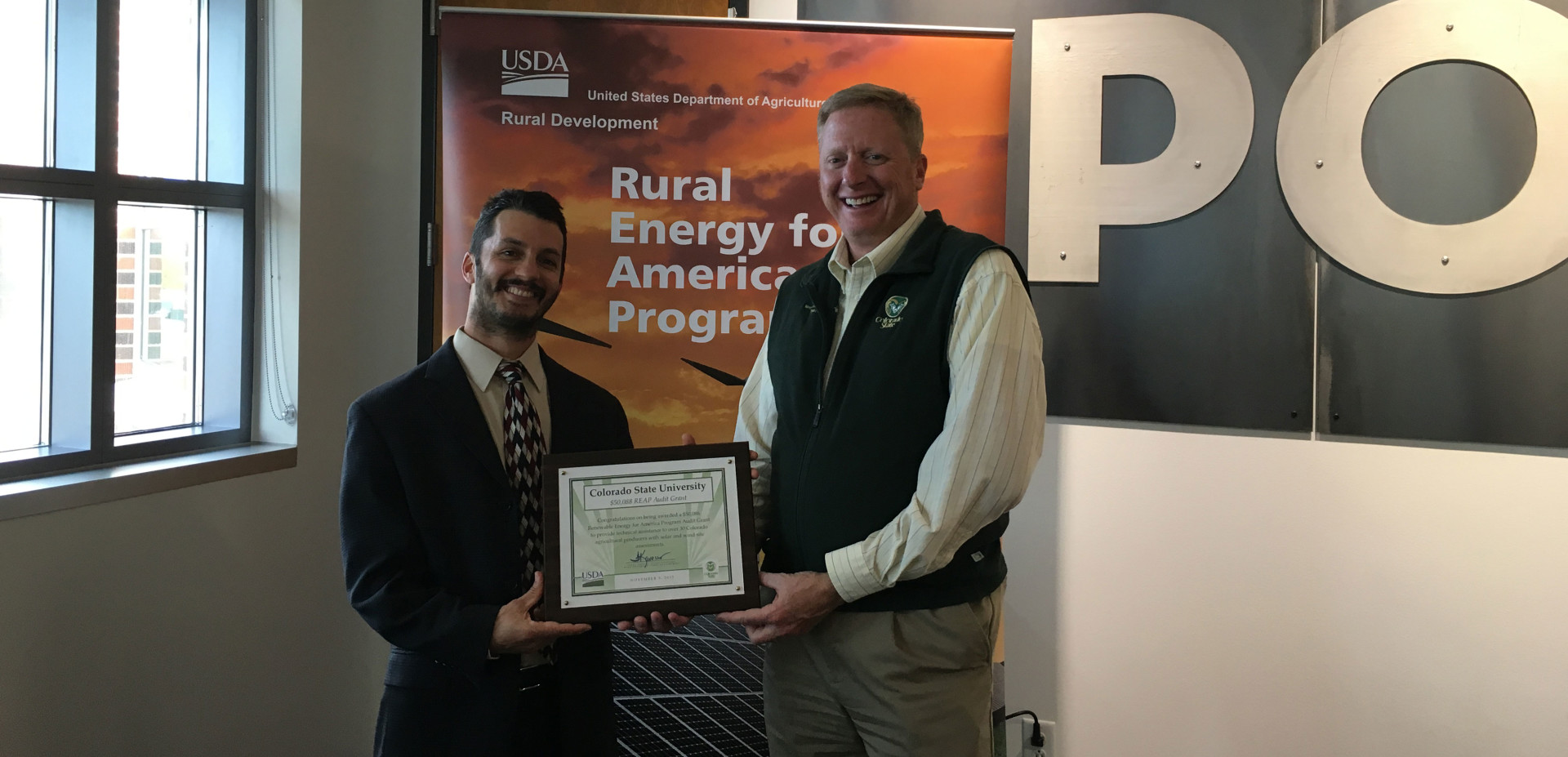
U.S. Department of Agriculture officials visited campus Nov. 5 to deliver a $50,000 check to Rural Energy Center Director Cary Weiner, left, and Assistant Director Mike Kostrzewa, in support of the SWAP project.
The Rural Energy Center, a member of the Colorado State University Energy Institute, has been awarded a $50,000 grant from the U.S. Department of Agriculture (USDA) to continue research on renewable energy system investments for Colorado agriculture producers.
In June 2015 the Rural Energy Center began accepting applications from ag producers interested in participating in free solar and wind energy assessments for producers with center pivot sprinklers. Applications were accepted on an ongoing basis, and by August the Rural Energy Center had reached capacity and producers were put on a wait list.
“I’ve been very pleased that we’ve received applications from a wide array of producers in different parts of the state,” said Cary Weiner, director of the Rural Energy Center. “With the opportunity to look at the economic feasibility of solar and wind systems in at least seven different utility service territories, we will not only help individual producers make informed decisions, but we will also be able to identify the key indicators of feasible projects.”
SWAP project
The Solar and Wind Assessments for Pivots (SWAP) project provides producers with estimated system sizes, costs, savings, and other information needed to decide whether a renewable energy system is a sound investment. Solar or wind systems could be installed on the corners of fields where center pivot sprinklers are used to irrigate crops. The renewable energy systems to be evaluated would be tied into the grid and used to offset the electricity costs of pumping water for irrigation.
“This assessment program is expected to be a great benefit for Colorado agricultural producers, and this grant further strengthens our ongoing partnership with USDA,” said Lou Swanson, director of Colorado State University Extension and vice president for engagement at CSU. “The Rural Energy Center, part of the Office of Engagement, will provide producers with pertinent data on costs, savings, and other information needed to decide whether investing in a renewable energy system is a wise choice.”
The timing of the project is driven by a few factors. Costs for solar panels have decreased by 75 percent in the last five years. The 30 percent federal tax credit for commercial solar will be reduced to 10 percent beginning in 2017 and will expire completely for wind systems.
USDA support
USDA, the sponsor of the project, offers 25 percent grants and 75 percent loan guarantees for the installation of renewable energy systems by agricultural producers. In addition, a recent analysis by the National Renewable Energy Laboratory showed that non-irrigated corners of fields with center pivot sprinklers in Colorado can potentially generate about the same amount of electricity as is consumed in the state every year.
This is the second USDA Rural Energy for America Program (REAP) grant awarded to the Rural Energy Center since 2011.
The USDA-sponsored SWAP project is also supported by the following external partners: Morgan Country Rural Energy Cooperative, Colorado Department of Agriculture, Highline Electric Association Rocky Mountain Farmers Union and Colorado Corn.